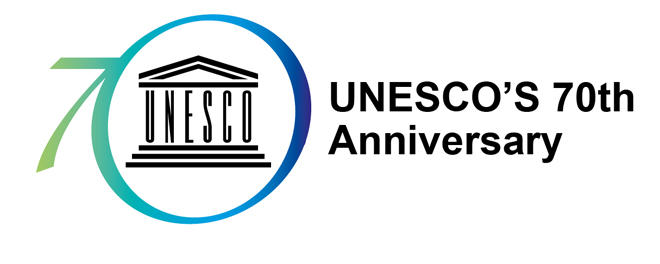Dr Salman Hussain: “Presenting the linkages between biodiversity loss and climate change”
Salman Hussein, expert in the economics of biodiversity, European coordinator of the Economics of Ecosystems and Biodiversity study (TEEB), explains in an interview with UNESCO the importance of calculating the economic value of biodiversity as the planet’s natural capital. The TEEB is a tool that can be used both to calculate the value of services provided by ecosystems and, conversely, to measure the economic consequences of biodiversity loss.
The interview took place during the Biodiversity Science-Policy Conference at UNESCO in January 2010. Dr Hussain also teaches at the Scottish Agricultural College in Edinburgh (Scotland).
Interview by Bernard Giansetto, UNESCO Bureau of Public Information
Do you think that governments listen to you, when it comes to considering the costs of depleting natural resources? In short, are you optimistic?
Yes, I think, overall, I myself and TEEB in general are optimistic. The process which started I suppose with the Millennium Ecosystem Assessment (MA)* is one which seems to have a significant buy-in from policy makers. TEEB in particular also has attracted a lot of buy-in from the policy community. To have this kind of conference at UNESCO on biodiversity, having been opened by the French minister, is a sign of how important it has become in terms of policy.
Climate change seems to have attracted all the attention recently…
Biodiversity and conservation have today very much taken the back seat to climate change. What we need to present in TEEB is the linkages – usually it is a win-win outcome if you decrease the amount of greenhouse gases emissions as you consequently increase biodiversity services provisions. We ought to have a dual approach, to understand that actions taken to limit climate change can also be beneficial for other reasons, and biodiversity is one of them.
We know that some fields cannot be quantified in money terms. For example, the UN Permanent Forum on Indigenous Issues stresses we cannot and should not put a “price tag” on sacred sites because they are simply beyond any monetary or financial value. So how can we nonetheless take them into account from the economic point of view?
TEEB works not only on economic valuation but also on evaluation which can include valuation without putting a monetary figure on things. And we should accept that it is not possible to put a monetary value on certain elements of biodiversity or societies or communities. Sacred forests is one of these examples but there are many others. What we have discussed within TEEB is non-monetary evaluation methods and the one which is perhaps the most important and dominant is multi-criteria decision making. In essence, policy makers have been using it for many years but without calling it such. They might for instance say that ‘we want to look at options but only appraise those options which do not deteriorate the quality of the sacred forests’. So, you have different processes and different mechanisms which can allow for the fact that putting a monetary value on goods and services is not always possible and also is not always appropriate.
And not always necessary either?
Neither necessary, nor appropriate in some cases as economics cannot work with an infinite value. And one can say in some cases that some resources have a near infinite value. We have in some cases instances of people committing suicide as a statement because their sacred grove is being destroyed; you can say that this particular resource has an infinite value to them. So, we need to use other approaches in this regard.
- *MA: report called for by the United Nations and established in 2005 by 1,360 international experts. The objective of the Millennium Ecosystem Assessment is to assess the consequences of ecosystem change for human well-being and the scientific basis for action needed to enhance the conservation and sustainable use of those systems.<//font><//font>
More about the TEEB: Biodiversity economists address policy
The Economics of Ecosystems and Biodiversity (TEEB) study is a major international initiative to draw attention to the global economic benefits of biodiversity, to highlight the growing costs of biodiversity loss and ecosystem degradation, and to draw together expertise from the fields of science, economics and policy.
The aim of the TEEB is to guide practical policy responses to the growing evidence of the impacts of ongoing losses of biodiversity and ecosystem services.
The “TEEB for National and International Policy Makers” released in 2009 demonstrates the value of ecosystems and biodiversity to the economy, to society and to individuals. It underlines the urgency of action, as well as the benefits and opportunities that will arise as a result of taking such action. The report shows that the cost of sustaining biodiversity and ecosystem services is lower than the cost of allowing biodiversity and ecosystem services to dwindle.
It demonstrates how we can take into account the value of ecosystems and biodiversity in policy decisions and identify and support solutions, new instruments, and wider use of existing tool in order to pioneer a way forward. In so doing, the report addresses the needs of policy-makers and those in the policy-making process.
It shows that poverty and the loss of ecosystems and biodiversity are inextricably intertwined. The immediate beneficiaries of many of the services of ecosystems and biodiversity are mostly the poor. The livelihoods most affected are subsistence farming, animal husbandry, fishing and informal forestry – most of the world’s poor are dependent on them.
<- Back to: All news




